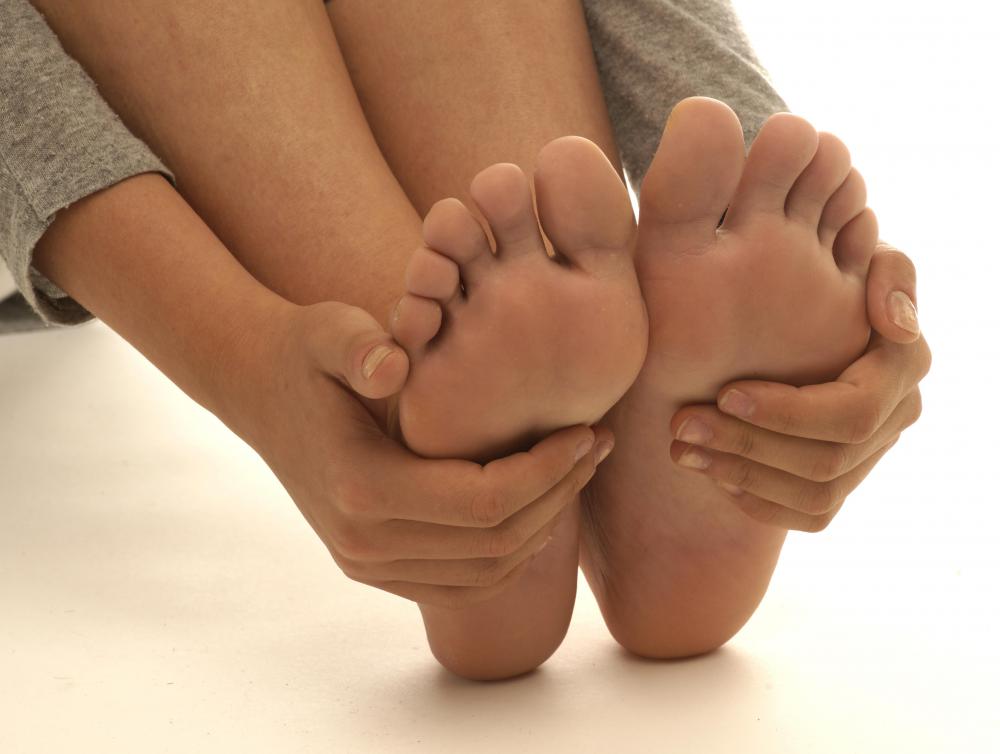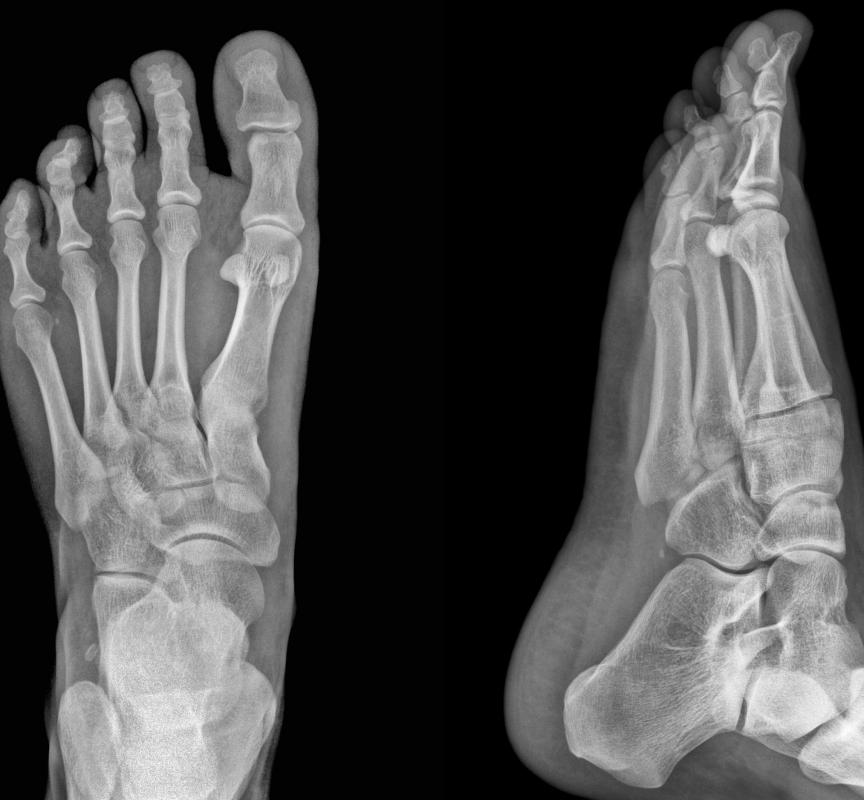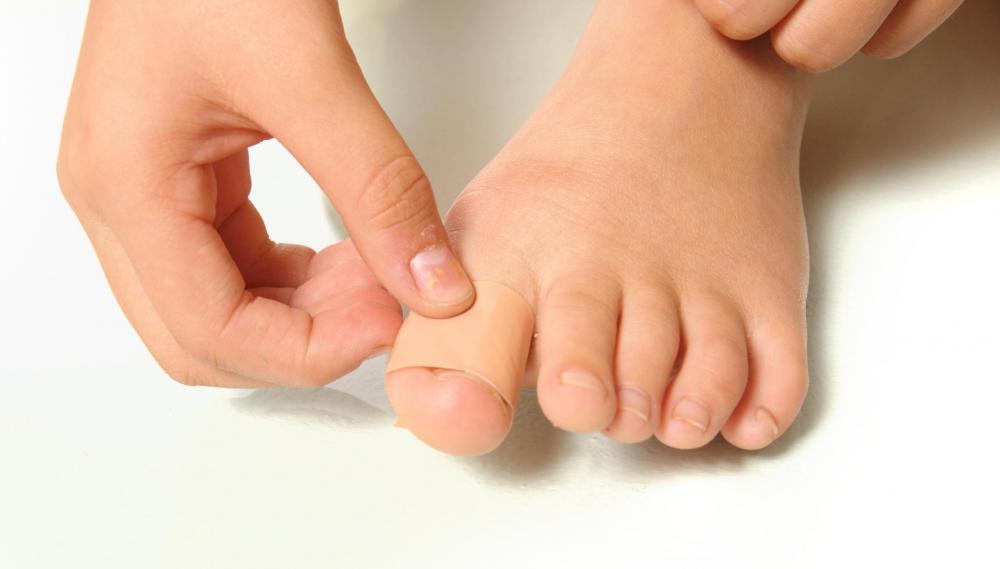At WiseGEEK, we're committed to delivering accurate, trustworthy information. Our expert-authored content is rigorously fact-checked and sourced from credible authorities. Discover how we uphold the highest standards in providing you with reliable knowledge.
What is the Forefoot?
The forefoot refers to the forward or most anterior section of the foot and typically includes the metatarsal and phalangeal bones, the long bones anterior to the arch of the foot and the bones of the toes, respectively. It may also refer to the muscles that attach along these bones and their tendons and the ligaments holding these bones together as well as the joints between them. In addition, forefoot is often used as an umbrella term for all of these structures when describing an injury to the region.
Of all the structures in the forefoot, the bones are the most substantial, as little muscle and other tissue is found here. The toe bones are known as the phalanges, and there are three phalanges in each of the lesser toes and two phalanges in the big toe, which is known as the hallux. These bones are relatively short and successively taper toward the tip of each toe, and they are held together by a plantar ligament on their bottom surfaces as well as a pair of collateral ligaments, one along either side of each articulation between phalanges.

In between the phalanges are synovial hinge joints called the interphalangeal joints — distinguished in the four lesser toes as distal, or far, and proximal, or near, interphalangeal joints — capable of flexion and extension. While there are no intrinsic muscles among the phalanges, the tendons of muscles in the lower leg attach to these bones and are what make flexion and extension possible. Muscles that flex or curl the toes are found deep in the calf, attach to the plantar or bottom aspect of each phalange, and include the flexor digitorum longus, which acts on the four smaller toes, and the flexor hallucis longus, which acts on the big toe. Toe extensors are muscles situated in the shin that attach to the dorsal or top aspect of each phalange; these include the extensor digitorum longus and extensor hallucis longus.

The next bones in the forefoot are the metatarsals, which lie in a row just posterior to the phalanges. There are five metatarsals — one for each toe — long, narrow bones found just ahead of the arch of the foot. These are connected to the phalanges via the metatarsophalangeal joints, synovial condyloid joints that allow flexion and extension as well as slight abduction and adduction, or flaring the toes outward and bringing them back in. At their proximal ends they articulate with the tarsal bones of the midfoot via the tarsometatarsal joints, which allow very little movement between bones, as well as with each other at the intermetatarsal joints, which allow a slight gliding movement between bones.

Ligaments in the forefoot that join the metatarsals to the phalanges are the same as those between the phalanges: the plantar and collateral ligaments. Between the metatarsal and tarsal bones are the dorsal ligaments on the top surfaces, the plantar ligaments on the bottom surfaces, and the interosseous ligaments, which run obliquely between the articulating surfaces of the bones. Muscles attaching to the metatarsals are the interossei, intrinsic foot muscles that run lengthwise between the metatarsals only and that produce abduction and adduction.
AS FEATURED ON:
AS FEATURED ON:
















Discuss this Article
Post your comments